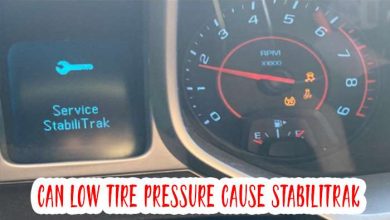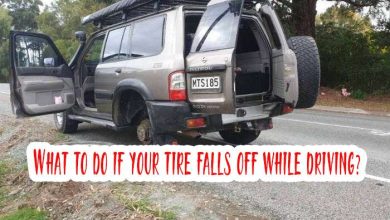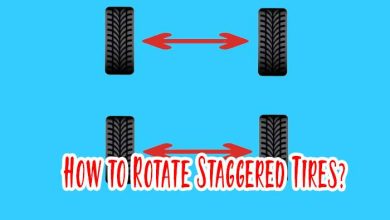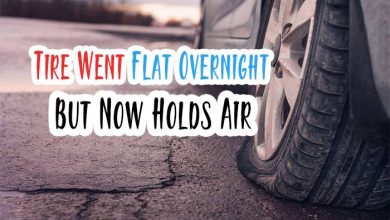Do You Need to Balance Tires After Rotation? An Expert’s Guide
Tires are like the shoes of your vehicle. They take you places, keep you safe, and, like shoes, need regular maintenance to perform at their best. One common question that perplexes car owners is, “Do you need to balance tires after rotation?”
As a tire expert with extensive knowledge about the inner workings of tires, I’m here to demystify this topic and provide you with all the essential information. Let’s delve into the world of tire rotation balancing and why it matters.
You do not need to balance tires every time you rotate them, but it is generally considered a good practice to do so.
Understanding Tire Rotation
Tire rotation is a crucial maintenance practice that involves moving your tires from one position on your vehicle to another. The primary purpose of tire rotation is to ensure that your tires wear evenly. Doing this can extend your tires’ lifespan and improve your vehicle’s overall performance.
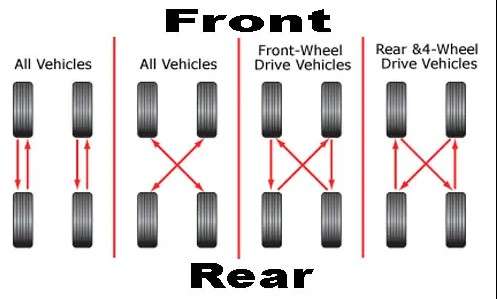
Tire rotation patterns can vary depending on your vehicle’s drivetrain. Common patterns include front-to-back, rearward cross, and “X” for all-wheel or four-wheel drive vehicles.
Rotating your tires as your vehicle’s manufacturer recommends can prevent irregular wear, leading to reduced performance and even safety issues. Read My recent post Do I Need to Replace Tires at 4/32?
Signs That Indicate the Need for Tire Rotation
If you’re unsure whether it’s time to rotate your tires, there are a few telltale signs to look out for:
- Uneven Tread Wear: Inspect your tires regularly. If you notice that the tread on one tire is more worn than the others, it’s time for a rotation.
- Vibration: If you experience unusual vibrations, especially at higher speeds, it could indicate that your tires are wearing unevenly or need balancing.
- Steering Pull: When your vehicle pulls to one side while driving, it might indicate uneven tire wear. Rotating your tires can help resolve this issue.
- Poor Fuel Efficiency: Unevenly worn tires can lead to decreased fuel efficiency. Regular rotation can improve your gas mileage.
The Connection Between Tire Balancing and Rotation
Let’s address the burning question: “Do you need to balance tires after rotation?” The short answer is, it depends.
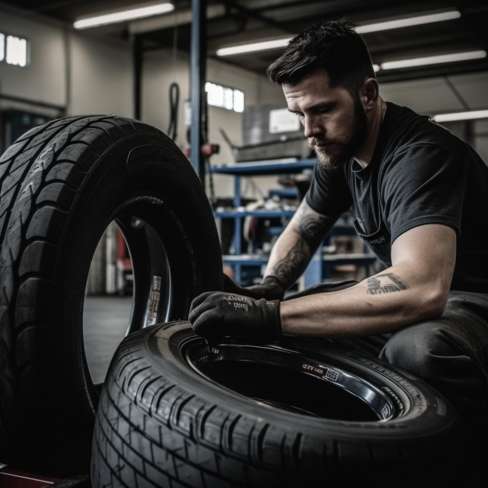
Tire Balancing: Balancing your tires involves adjusting the weight distribution of the tire and wheel assembly. This ensures that the tire rotates evenly and promotes a smoother ride. Balancing is typically necessary when you mount new tires, as well as when you detect balance issues, such as vibrations.
Tire Rotation: As mentioned earlier, tire rotation is primarily about evening out the wear on your tires. However, it indirectly affects balance. When you rotate your tires, you change their positions on your vehicle. This can lead to an imbalance, especially if your tires are not balanced properly.
Do You Need to Balance Tires After Rotation?
It is not absolutely necessary to balance tires after rotation, but it is a good idea to do so. Tire balancing helps ensure that the tire and wheel assembly weight is evenly distributed around the axle. This helps to reduce vibration, improve fuel economy, and extend the life of the tires.
When you rotate your tires, you move them from one axle to another. This can change the weight distribution of the tire and wheel assembly, leading to imbalance.
If you notice any vibration after rotating your tires, it is a good idea to have them balanced.
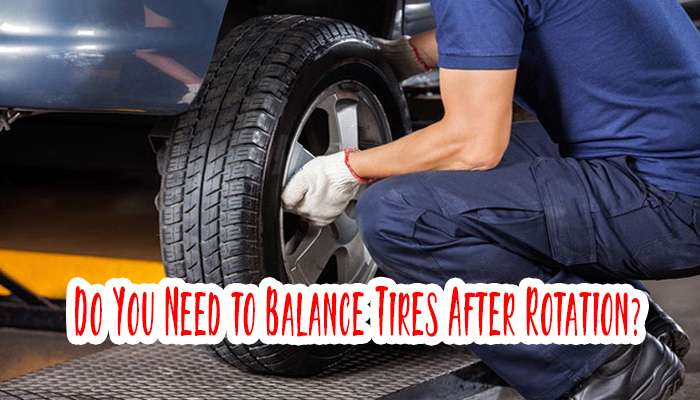
Here are some of the benefits of balancing your tires after rotation:
- Smoother ride: Tire imbalance can cause vibration in the steering wheel and throughout the vehicle. This can make for a rough and uncomfortable ride. Balancing your tires can help to eliminate this vibration and give you a smoother ride.
- Improved fuel economy: Tire imbalance can also cause your vehicle to work harder, reducing fuel economy. Balancing your tires can help improve fuel economy by reducing the work your vehicle has to do.
- Extended tire life: Tire imbalance can lead to uneven tread wear, which can shorten the life of your tires. Balancing your tires can help extend their life by ensuring they wear evenly.
If you are unsure whether you need to balance your tires after rotation, it is always best to err on the side of caution and have them balanced. This is especially important if you notice any vibration after rotating your tires.
Step-by-step Guide to Rotating and Balancing Your Tires at Home
Now that you understand the importance of both tire rotation and balancing let’s explore how you can perform these tasks at home.
Step 1: Gather Your Tools
Before you begin, you’ll need the following tools:
- A car jack and jack stands
- A lug wrench
- A torque wrench
- A tire iron
- Wheel chocks
- A bubble balancer (for balancing)

Step 2: Find a Safe Location
Choose a flat and level surface for your tire maintenance. Ensure your vehicle is in park (for automatic transmissions) or in gear (for manual transmissions), with the parking brake engaged.
Step 3: Loosen the Lug Nuts
Loosen the lug nuts slightly on all the tires using your lug wrench. Do not remove them completely at this stage.
Step 4: Jack Up the Vehicle
Position the car jack under the vehicle’s specified jacking point and lift your car. Once it’s off the ground, place the jack stands securely under the vehicle for added safety.
Step 5: Remove the Tires
Now, you can remove the lug nuts and remove the tires.
Step 6: Rotate the Tires
Refer to your vehicle’s manual for the recommended rotation pattern. Typically, this involves moving the rear tires to the front and vice versa. Follow the pattern carefully to ensure even wear.
Step 7: Inspect and Balance
This is the moment to inspect your tires for signs of imbalance. It’s a good time to balance the tires if you notice uneven wear. For DIY enthusiasts, a bubble balancer can help you identify imbalances. If you’re uncertain, it’s best to consult a professional.
Step 8: Reinstall the Tires
Put the tires back on and tighten the lug nuts by hand. Lower the vehicle using the jack and remove the jack stands.
Step 9: Tighten the Lug Nuts
Use your torque wrench to tighten the lug nuts to the manufacturer’s recommended torque specifications. This ensures they are secure but not over-tightened.
Step 10: Lower the Vehicle
Gently lower your vehicle to the ground using the car jack.
Step 11: Final Lug Nut Tightening
Now that your vehicle is on the ground go around and tighten the lug nuts in a crisscross pattern. This ensures even pressure on the tires.
Step 12: Check the Tire Pressure
Use a tire pressure gauge to check and adjust the tire pressure to the recommended levels.
Congratulations! You’ve successfully rotated and, if necessary, balanced your tires at home. This maintenance routine can save you money and extend the life of your tires.
Frequently Asked Questions
What is the cost of tire rotation and balancing?
The cost of tire rotation and balancing can vary depending on where you get the service and your location. On average, you can expect to pay between $20 and $50 for a standard rotation and balance. However, some auto shops offer it as part of a routine maintenance package, so be sure to inquire about any bundled services.
How often should I rotate my tires?
Tire rotation frequency depends on several factors, including vehicle type and driving habits. As a general guideline, rotating your tires every 6,000 to 8,000 miles or at every other oil change is recommended. Consult your vehicle’s manual for specific recommendations.
Can I rotate my tires without balancing them?
While you can rotate your tires without balancing, it’s not always advisable. Tire balancing ensures an even weight distribution on each tire, contributing to a smooth ride and extended tire life. Addressing this issue during rotation is best if your tires show signs of imbalance.
What happens if I skip tire rotation and balancing?
Skipping tire rotation and balancing can result in uneven tire wear, reduced fuel efficiency, vibrations, and decreased overall vehicle performance. It can also lead to the need for premature tire replacement, which is a more costly outcome compared to regular maintenance.
How can I tell if my tires are unbalanced?
Signs of unbalanced tires include vibrations, especially at higher speeds, uneven tread wear, and steering pull. If you experience any of these issues, it clearly indicates that your tires may be unbalanced and need attention.
Conclusion
In the world of tire maintenance, the relationship between rotation and balancing is essential to ensuring the longevity and performance of your tires. While you may not always need to balance your tires after rotation, it’s a practice that can enhance your driving experience and safety.
Regularly rotating and balancing your tires, whether done by a professional or as a DIY project, is a sound investment in your vehicle’s health. It promotes even wear, better fuel efficiency, and a smoother ride, ultimately saving you money in the long run.
Reference Link
Glossary
- Tire Rotation: The practice of moving tires from one position to another on a vehicle to ensure even wear.
- Tire Balancing: The process of adjusting the weight distribution of a tire and wheel assembly to ensure an even rotation.
- Tread Wear: The gradual wearing down of the tire’s tread affects its performance and lifespan.
- Vehicle Manual: The manufacturer’s guide that provides essential information on the proper care and maintenance of your vehicle.

